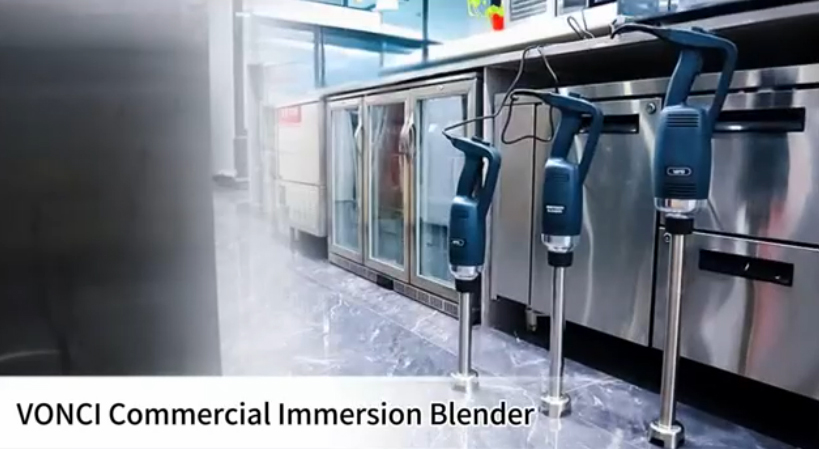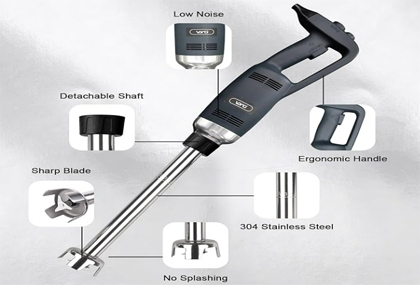Commercial Immersion Blenders Introduction
Nov 19,2024
520
Commercial immersion blenders, also known as hand blenders or stick blenders in a commercial setting, are powerful kitchen tools designed for heavy - duty use in commercial kitchens such as restaurants, cafes, and catering services.

1. Design and Construction
Motor:
They are equipped with a high - wattage motor, usually ranging from 300 to 1000 watts or more. A powerful motor is essential as it allows the blender to handle a wide variety of ingredients, including thick mixtures like pureed soups and smoothies with chunks of fruits and ice.
The motor is often enclosed in a durable housing, usually made of stainless steel or high - quality plastic. Stainless - steel housings are preferred in commercial settings due to their resistance to corrosion, easy cleaning, and sturdiness.
Blade Assembly:
The blades are typically made of stainless steel. They are designed to be sharp and durable to effectively blend and puree different textures of food. Some immersion blenders have a single - tier blade, while others have multiple - tiered or serrated blades.
The blade assembly is usually detachable, which makes it easy to clean. In addition, the length of the blender shaft (the part that holds the blades) varies, but it is usually long enough to reach into deep pots and containers, allowing for convenient blending without having to transfer the contents to a traditional blender jar.
2. Functionality
Blending Modes:
Many commercial immersion blenders come with variable speed settings. This allows the user to adjust the speed according to the ingredients being blended. For example, a low speed might be used for gently mixing delicate sauces, while a high speed is needed to puree a thick root - vegetable soup.
Some advanced models also have a pulse function. The pulse option provides short bursts of high - speed blending, which is useful for quickly chopping ingredients like nuts or coarsely blending chunky salsas without over - processing them.
Versatility:
These blenders can be used for a wide range of applications. They are excellent for making soups, as they can blend the ingredients directly in the pot, reducing the need for extra dishes and minimizing the transfer of hot liquids.
They are also used for making smoothies, milkshakes, and pureed baby foods. In addition, commercial immersion blenders can emulsify sauces, such as mayonnaise or hollandaise, by quickly blending the oil and other ingredients together to create a smooth and stable emulsion.
3. Benefits in a Commercial Setting
Time - Saving:
In a busy commercial kitchen, time is of the essence. Commercial immersion blenders can quickly blend ingredients, reducing the preparation time for many dishes. For example, it can take just a few minutes to puree a large batch of soup compared to using a traditional counter - top blender, which may require multiple batches and more setup time.
Space - Saving:
They are relatively compact compared to large counter - top blenders. This is a significant advantage in a commercial kitchen where space is often limited. The blender can be easily stored in a drawer or hung on a wall hook when not in use.
Their compact size also allows for easy transportation between different workstations in the kitchen, enabling chefs to use them wherever they need to blend ingredients.
4. Maintenance and Cleaning
Cleaning:
After use, the detachable blade assembly can be easily removed and washed in a dishwasher or by hand. The main body of the blender can usually be wiped clean with a damp cloth. It's important to clean the blender thoroughly after each use to prevent cross - contamination between different ingredients and to maintain its performance.
Some models have a self - cleaning function. This typically involves running the blender in a container filled with soapy water at a certain speed to clean the blades and the shaft.
Maintenance:
Regular maintenance includes checking the blade sharpness and the motor performance. If the blades become dull, they can be replaced according to the manufacturer's instructions. The motor may require occasional lubrication or inspection for any signs of wear and tear, depending on the usage frequency and the manufacturer's recommendations.





